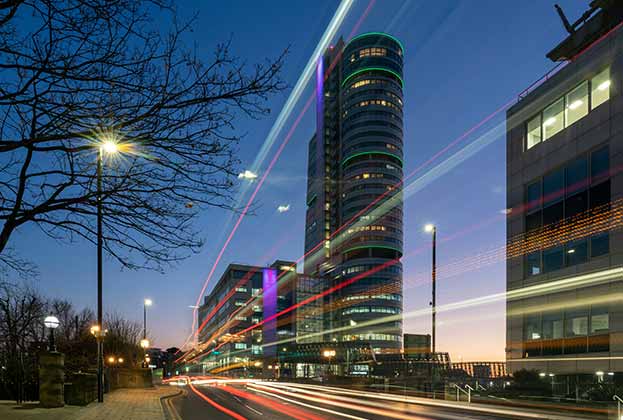There’s no doubt that technology has accelerated its way up the real estate agenda, with this year being no exception thanks to the fundamental changes brought about by Covid-19.
There’s been a subsequent shift in mind-set towards the need for technology in every part of the real estate ecosystem. As a result, the era of smart buildings has really begun in earnest, driven and accelerated, primarily, by a requirement for improved wellbeing, safety and sustainability.
Organisations are having to rapidly think about redefining building design to create workplaces that put their people at the core of their building and focus on wellbeing. With a realisation that improved wellbeing is strongly correlated to increased productivity, the return on investment can only make sense.
With some movement back into the office already this year, many companies have had to think about how best to cater for reduced capacity levels, with some having introduced desk booking systems to assist with managing numbers and also tracking down those who could have potentially been exposed if a Covid-19 case comes to light.
Alongside this, occupier apps that help to connect a building’s community enable better communication, with information about accessing a building, phased reopening and emergency communications fundamental in encouraging employees to return to and feel safe in the office. Touchless technologies, from taps to lifts and soap dispensers to door entry, as well as air quality monitoring, occupancy/density monitoring and wayfinding will all become part of the new normal.
From a sustainability point of view, technology should be seen as an enabler to help companies stay on track to achieve any sustainability targets they have in place. This will cover a whole host of initiatives including employee mobility on the way to and at the office, how energy is consumed in the building and how communication about initiatives is transferred to staff to ensure a holistic approach.
In terms of the specifics of energy consumption, we can expect to see enhanced automatic control over building systems to help make them more sustainable. Solar window technology is improving both in terms of efficiency and transparency helping to stem a building’s electricity consumption, and wind turbines on towers to capture the vortexes generated by them are becoming more common.
As a result of this huge uptick in technology, there will undoubtedly be a bigger focus on data and reporting. The insight that this data will provide will be key to our understanding of how best to configure spaces, provide the safest environments possible for employees and also how to futureproof against other potential threats to our health and wellbeing.
This analysis will be just as relevant for companies who are still exclusively working from home as those who are balancing a return to the office in line with shifting government regulation.
Fundamentally, we need an occupier-first approach to kick-start the new normal, with data playing one of the most important roles.
Listen to 'Turning data into your most valuable asset', a webinar which discusses why technology and data are vital for the recovery and growth of the commercial real estate sector in the wake of the COVID-19 crisis.
Further information
What role will technology play in the role to the new normal?

-impact-the-office-sector(1).jpg)

.jpg)






